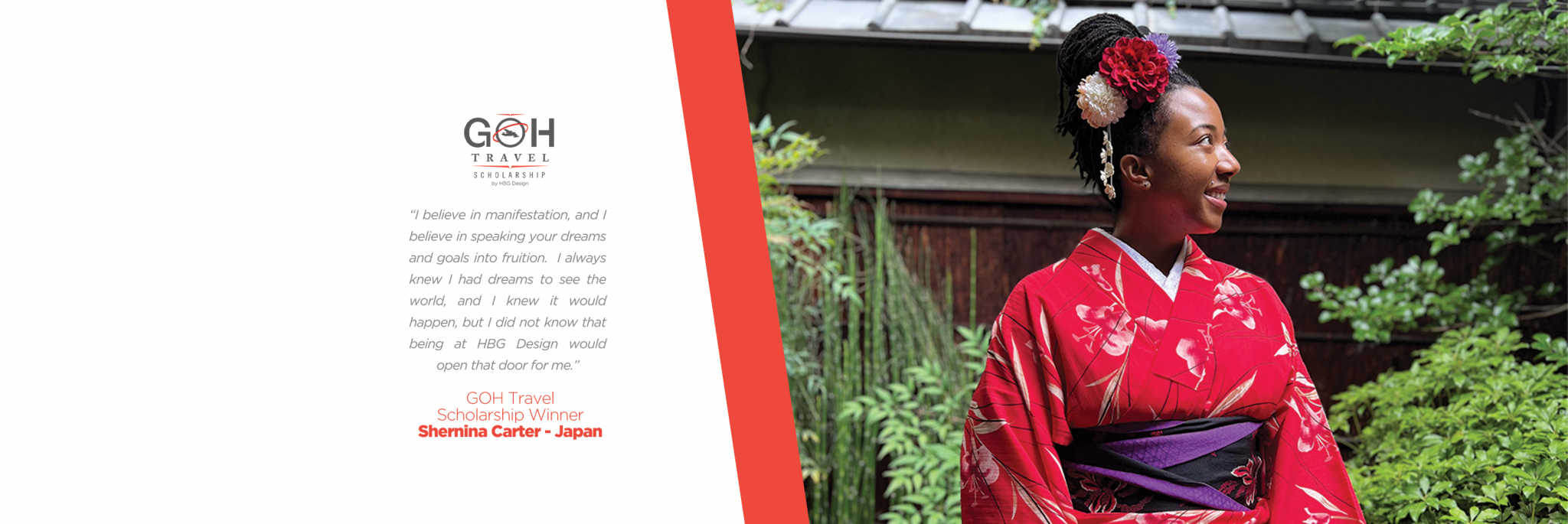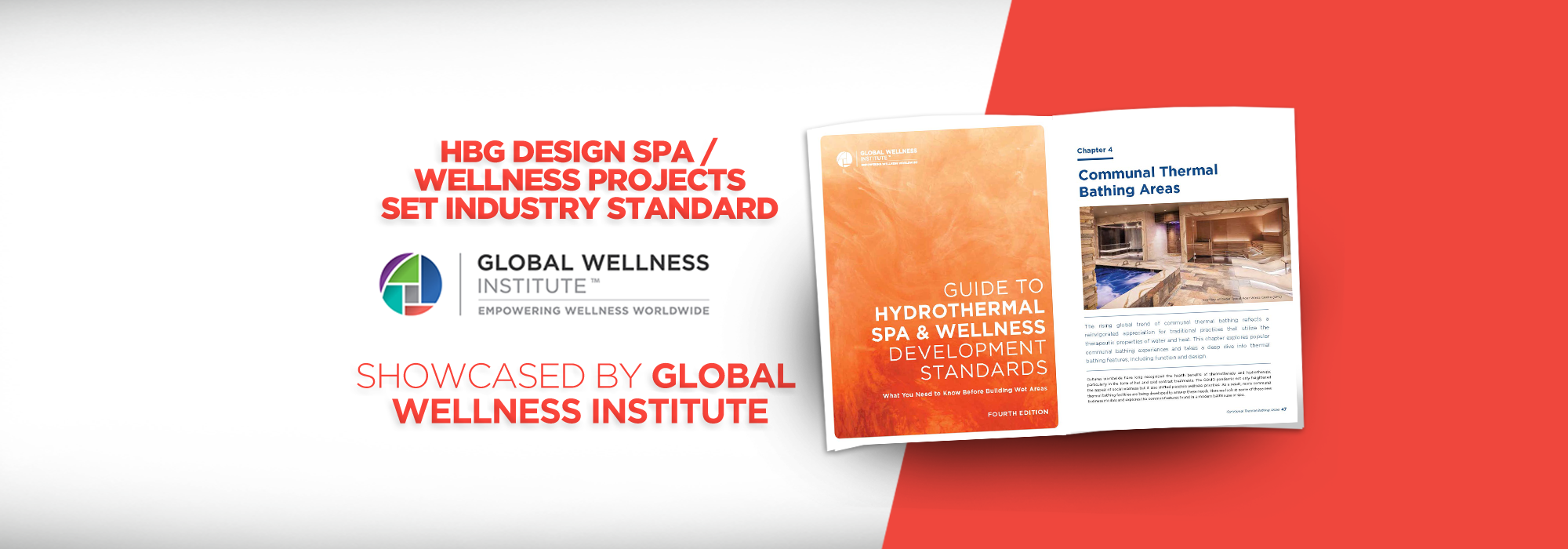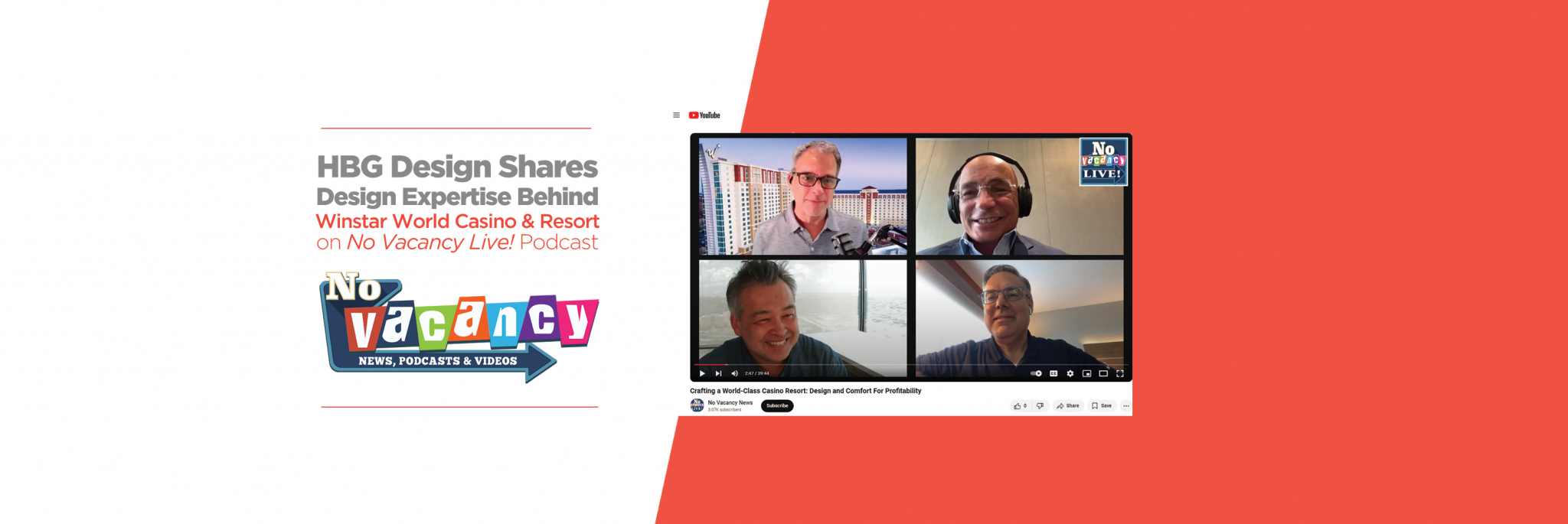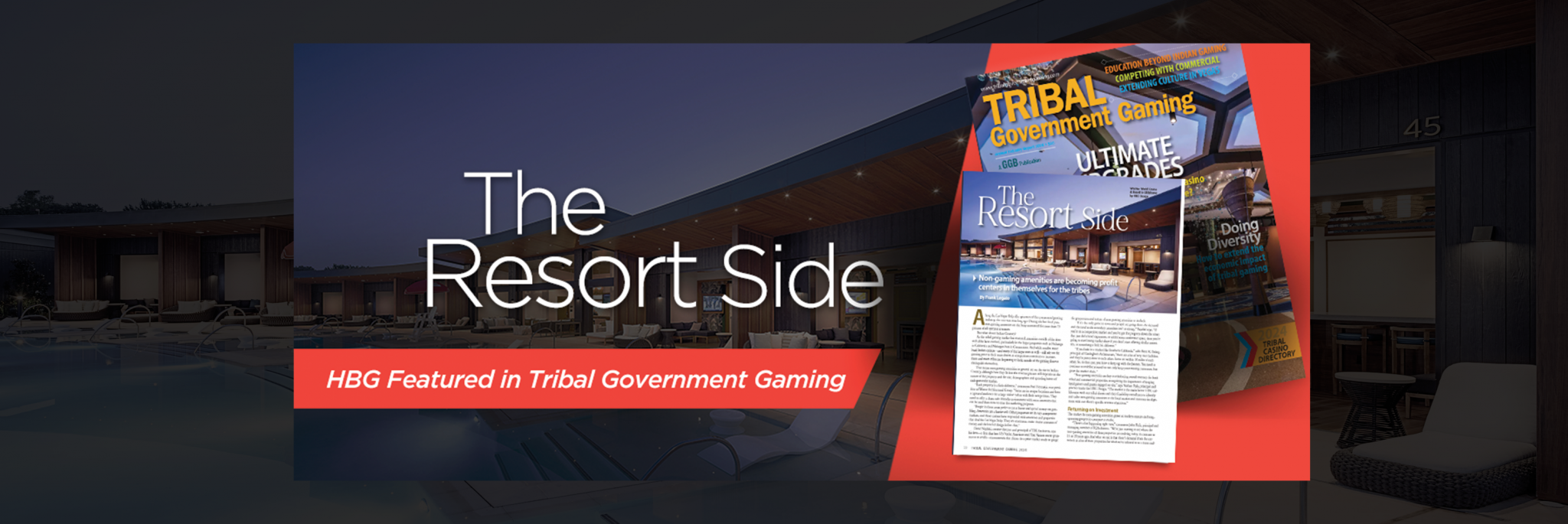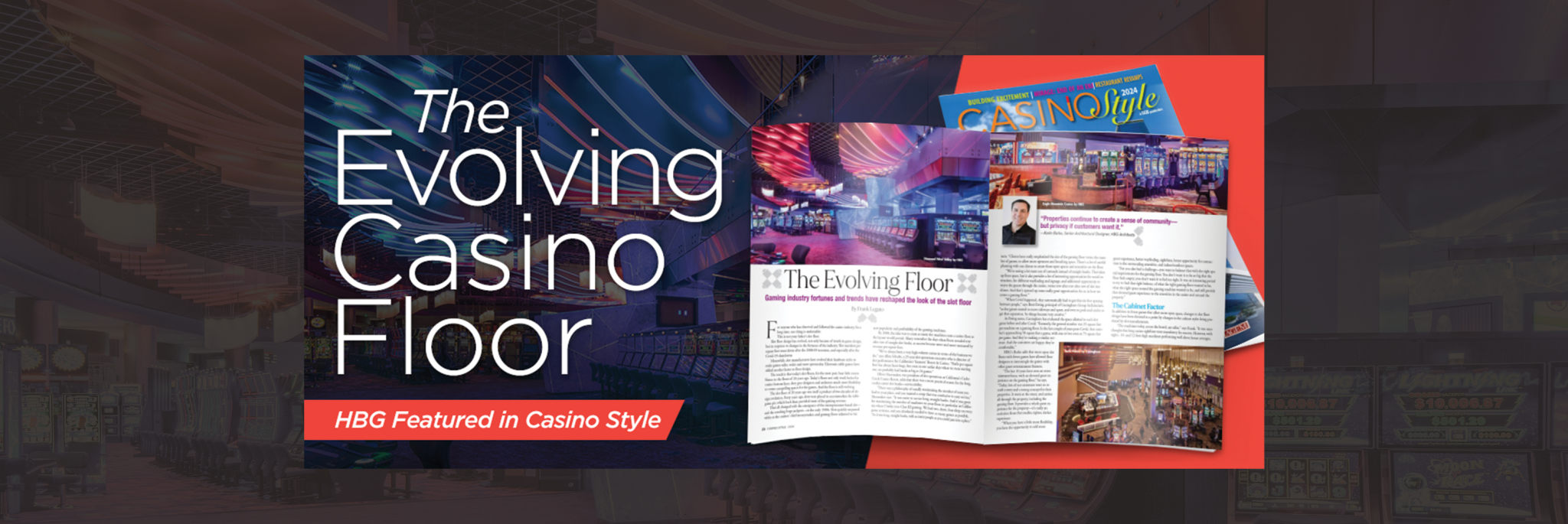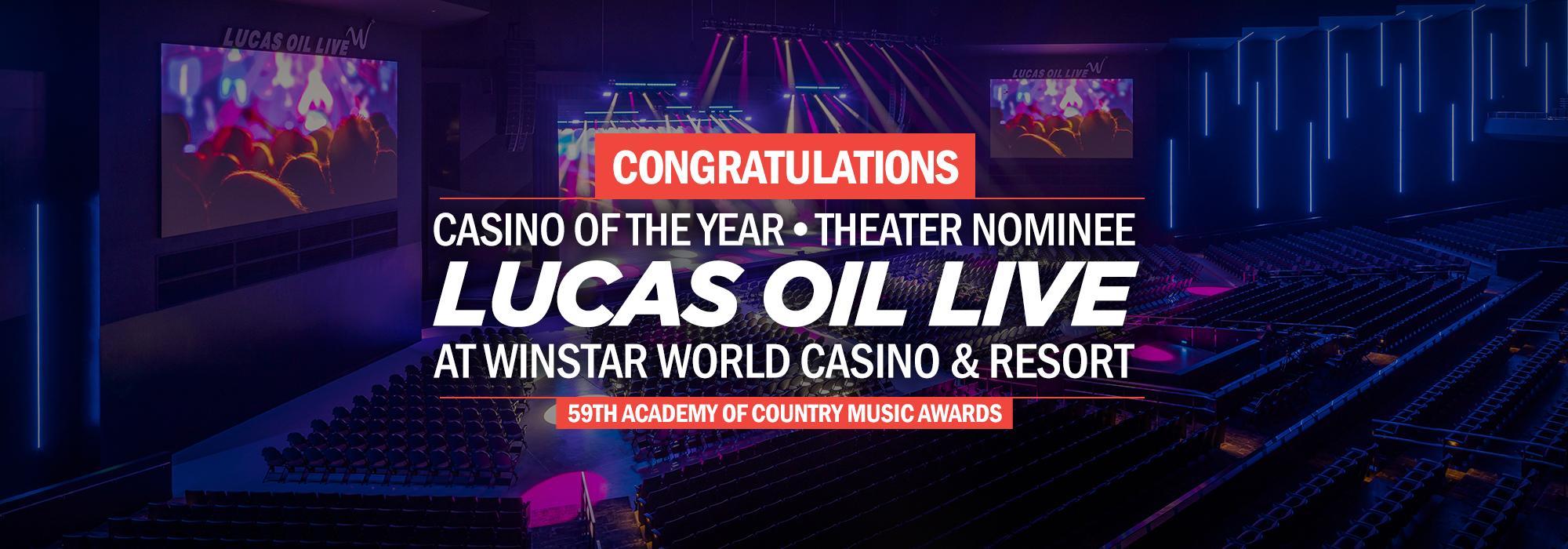GOH Travel Scholarship Winner: My Unforgettable Journey Through Japan
Travel enriches our lives, broadens our outlook and opens our minds…In those moments immersed in another cultural context we learn about other perspectives. The GOH Travel Scholarship awards $7,500 annually to one employee to enhance experience-based learning through a purposeful international travel journey. Scholarship recipients share how their discoveries impact the way we look at life, appreciate culture and approach design. Shernina Carter was selected as the 2024 GOH Travel Scholarship Winner and after returning from her trip to Japan, she's back to share highlights from her journey. Watch below to enjoy Shernina's full presentation of her trip.
Shernina Carter Guest Blogger - GOH Travel Scholarship Trip to Japan
“The frog in the well knows nothing of the great ocean.”
This Japanese proverb struck me as I prepared for my journey to Japan. Combating fear, saying yes to new experiences, and embracing growth and change became the foundation of my trip.

If you'd like to experience my trip from beginning to end, I invite you to check out the presentation I recently shared with my co-workers. But first, here are some of my favorite highlights—let's dive in!
One Japanese phrase that resonated deeply with me is ichi-go ichi-e, meaning "one time, one meeting." It reminds us to cherish each moment and encounter, because they happen only once in a lifetime. Throughout my travels in Kyoto, Osaka, and Tokyo, I made it a point to stay mindful, fully immerse myself in the experience, and appreciate the beauty of the present moment.
Kyoto
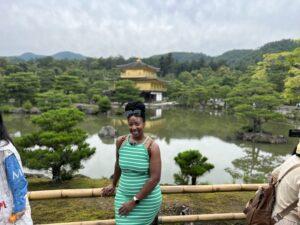
One of my must-see spots was Kinkaku-ji, or as it's known in English, the Golden Pavilion. Its breathtaking beauty and rich history were calling me—and I knew I had to experience it for myself. The atmosphere was so serene, it set the tone for my entire adventure. I also visited Ryoan-ji, where the famous rock garden invited me to meditate and reflect on life’s simplicity and beauty.
One of the most memorable moments in Kyoto was when I donned a traditional kimono and participated in a matcha tea ceremony at Kimono Tea Ceremony Maikoya. The entire process of preparing and serving matcha felt like a meditative practice, reminding me to live in the moment and appreciate the uniqueness of each experience. It was a beautiful way to immerse myself in the history and mindful traditions of Japan.
Wandering through Kyoto’s Gion District, I learned about the rich traditions of geishas and kabuki performers, soaking in the cultural heritage of the city. I could almost feel the stories from centuries past lingering in the air as I walked through the historic streets.
Kyoto’s Nishiki Market, often called "Kyoto’s Kitchen," was a food lover’s dream. I strolled through the market, marveling at local delicacies like octopus on a stick and giant shrimp. The market’s history and its generations-old shops made it a truly captivating stop on my adventure.
Osaka
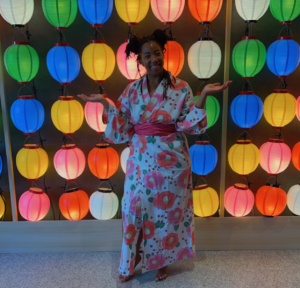
My journey to Osaka took me to Solaniwa Onsen Osaka Bay, where I fully embraced Japanese wellness culture. Wearing a yukata, I challenged myself to endure a 140-degree sauna, followed by a refreshing dip in an outdoor onsen. The experience was both physically and mentally refreshing, especially after a traditional Sabai Sabai Thai massage that left me feeling completely rejuvenated.
Tokyo
Tokyo was a whirlwind of excitement. One of my favorite experiences was participating in Kintsugi, the traditional art of repairing broken ceramics with gold. The process was intricate and time-consuming, but it taught me the beauty of embracing imperfections, both in objects and in life.
One critical lesson I learned about myself while practicing Kintsugi was that sometimes we go through processes or situations in life where we may think it’s taking too long, or that we’ve done enough. We may not realize that we need a little more patience, or a little more knowledge, or a little more of some other skill that can only be developed or strengthened if we continue to move forward and work a bit longer. If we move on too soon, we won’t be ready, nor will we be as successful or shine as bright! So...my lesson learned is to stay in the process if it’s not time yet. Don’t give up even if you’re getting tired. It will all make sense once you’ve moved through the process to your next level and can shine so bright!
Of course, no trip to Tokyo would be complete without visiting TeamLab Planets Tokyo Museum, which holds the Guinness World Record as the most visited museum from 2023-2024. I walked barefoot through a waterfall, marveled at digital flower displays, and splashed through water filled with colorful, animated koi fish. One room was filled with giant, inflatable balls that bounced around in sync with a stunning light show—it was pure joy and wonder.

After the museum, I stumbled upon Vegan Ramen Uzu, a rare find in Japan. The ramen was delicious, made with love and care, and it was one of the most memorable meals of my trip.
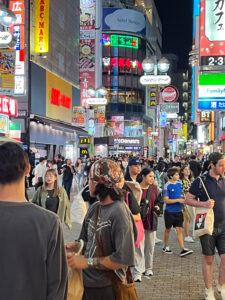
I also visited Skytree Tower, the world’s tallest tower. Standing at the top and gazing out over Tokyo, I felt an overwhelming sense of accomplishment and fearlessness. It was a reminder of how far I had come—both literally and figuratively.
My exploration of the Shibuya District was equally exhilarating. The neon lights, bustling streets, and famous Shibuya Crossing felt like stepping into a different world. I spent hours discovering hidden gems in this vibrant area, and each corner revealed something new and exciting.
This trip was truly life-changing. Japan’s perfect blend of tradition and modernity, paired with the kindness of its people, made my journey unforgettable. I returned home with a deep appreciation for the culture, a newfound fearlessness, and a heart full of incredible memories.
I believe in manifestation, and I believe in speaking your dreams and goals into fruition. I always knew I had dreams to see the world, and I knew it would happen, but I did not know that being at HBG Design would open that door for me. When I first began working here, it opened my eyes to greater: greater office culture and camaraderie; greater work experiences and career growth, and it showed me that ‘better’ was available and attainable if I only took the step to seek. This company has allowed me the opportunity to operate in a greater capacity and given me opportunities to continue to grow. Receiving this travel scholarship was another instance where HBG Design aided in my growth and elevation. The GOH Travel Scholarship was founded in honor of founding partner, Gregory O. Hnedak, FAIA, whom I only met for the first time this week during my presentation. Yet, his legacy has forever impacted me…allowing me to release fear, experience the big ocean outside my small well, and inspire others to do the same.
HBG Design Projects Set Industry Standard in Spa/Wellness
We’re excited to announce that two of our standout spa projects, the WinStar Spa at WinStar World Resort & Casino in Thackerville, OK, and the Cedar Spa at Four Winds Casino Hotel & Spa in South Bend, IN, are highlighted in the 4th edition of the Global Wellness Institute’s Guide to Hydrothermal Spa & Wellness Development Standards, setting the industry standard in spa design.

The WinStar Spa is particularly notable for housing the largest hydrotherapy tub/pool in the U.S., exemplifying innovation and HBG’s commitment to wellness-focused design. This recognition by the Global Wellness Institute underscores our role in setting new standards for luxury spa and wellness experiences across the country.


Wellness industry specialist Don Genders, of Design for Leisure, was instrumental in creating this comprehensive guide, which has become a key resource for developers, architects, designers, and builders interested in incorporating hydrothermal wellness elements into their projects. As spa and wellness facilities continue to grow in demand, the updated edition provides essential insights on integrating features such as saunas, steam rooms, and cold plunges into both residential and commercial spaces.
We are proud that HBG Design's work is helping shape the future of wellness design and are thrilled to be included in this global resource, available now for complimentary download. Whether it's the large-scale hydrotherapy features at WinStar or the tranquil luxury of Cedar Spa, our team’s projects continue to define the industry standard for spa and wellness environments.
For more details, download the guide and explore how hydrothermal spa elements can elevate wellness experiences in any space.
HBG Shares Resort Design Expertise on No Vacancy Live!
HBG Design and our spectacular WinStar World Casino Resort project recently took center stage on No Vacancy Live! with hospitality industry experts and personalities, Glenn Haussman and Anthony Melchiorri (host of the Travel Channel’s Hotel Impossible). During the episode, HBG's Rob Jurbergs, AIA, Principal and Senior Architectural Designer, and Ray Mabry, Principal and HBG Dallas Office Leader, revealed fascinating insights into the design and creation of this iconic resort in Thackerville, Oklahoma, just 90 minutes from the booming Dallas-Ft. Worth area. Catch up on all the behind-the-scenes details that make WinStar a must-see destination!
Since 2017, No Vacancy News has been the go-to source for the hotel industry, providing actionable insights, expert interviews, and educational content through its podcasts, videos, and live branded experiences. Hosted by Glenn Haussman, a leading voice in hospitality, No Vacancy Live! has been recognized as the #1 hospitality show by the International Hospitality Institute since the award’s inception. We were honored to join Glenn to share our experiences with the casino resort’s design and our collaboration with the Chickasaw Nation to create a world-class destination.
A Look Inside WinStar


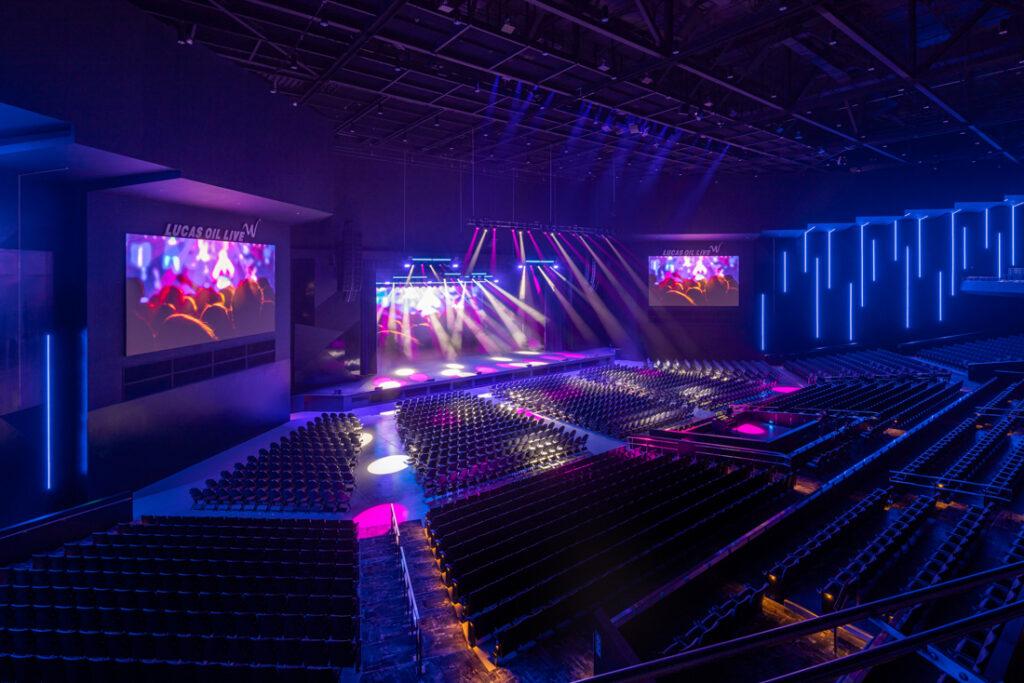 WinStar, one of the most recognized gaming resort destinations in the country, offers an unparalleled guest experience through its luxurious amenities and entertainment spaces. In their podcast interview, Rob Jurbergs, Principal and Architectural Designer at HBG Design, and Ray Mabry, Principal and Dallas Office Leader, highlight the resort’s design evolution and how HBG, with over 45 years of casino resort expertise, established the property's architectural identity.
WinStar, one of the most recognized gaming resort destinations in the country, offers an unparalleled guest experience through its luxurious amenities and entertainment spaces. In their podcast interview, Rob Jurbergs, Principal and Architectural Designer at HBG Design, and Ray Mabry, Principal and Dallas Office Leader, highlight the resort’s design evolution and how HBG, with over 45 years of casino resort expertise, established the property's architectural identity.
Key elements of the project include:
- Lucas Oil Live: A 6,500-seat, multi-purpose performance venue for concerts, boxing, MMA events, banquets, and more. The space includes a VIP area with a private lounge, full bar, and kitchen.
- 304-room Hotel: Offering guests a modern and comfortable stay, the hotel's interiors are inspired by natural tones and earthy elements reflective of the Red River region, featuring rich woodsy designs and warm rust orange accents.
- Cascades Pool Area: This signature outdoor area includes multiple pool tiers and food and beverage options, making it a dynamic hub of activity and relaxation. The distinctive sundial-like roof design enhances the ambiance and complements the open, airy environment.
Strategic Location and Market Positioning
Rob and Ray also discussed the importance of WinStar’s location in attracting guests from the growing Dallas-Fort Worth area. Just a short drive from one of the nation’s largest metropolitan areas, WinStar provides a sought-after escape, drawing visitors for its high-quality amenities and entertainment offerings.
One of the venue’s notable successes is the Lucas Oil Live performance venue, which has hosted some of the biggest names in rock and country music. The venue was even nominated for Casino of the Year-Theater by the Academy of Country Music, solidifying WinStar’s position as a premier entertainment destination.
Thoughtful Design and Guest Experience
Inspired by the natural beauty of the Red River region, HBG Design’s architectural and interior design teams brought elements of the local landscape into the resort’s design. From the organic shapes and curvilinear forms used in the building’s layout to the earthy color palettes and natural materials, every detail is crafted to create an inviting, comfortable atmosphere.
The V-shaped design of the hotel maximizes guest views while creating a sense of embrace, and the wind-blocking structure enhances comfort in the outdoor areas. The intentional design of the pool area offers guests multiple experiences, from relaxed lounging to lively social spaces, all centered around the beautiful landscape.
Tune in to the No Vacancy News podcast episode with Rob Jurbergs and Ray Mabry to hear more about the incredible design journey behind WinStar World Casino Resort. Learn how strategic design decisions, collaboration, and attention to detail have transformed this resort into a world-class destination.
Transforming Gun Lake Casino into a Resort Entertainment Oasis
HBG Design is counting down to the 2025 opening of the Gun Lake Casino Phase 5 expansion! In a series of project features with HBG Associate and Lead Architectural Designer, Thor Harland, AIA, we will focus on each of the unique amenity designs that promise to make the Gun Lake resort entertainment guest experience like no other in the regional resort market. This month, discover HBG’s intricate design of the eagerly anticipated Wawye Oasis event and pool environment at Gun Lake. The stunning climate-controlled domed structure will captivate guests, transitioning seamlessly from a serene pool oasis by day to a dynamic performance complex by night. Located in Wayland, Michigan, near Lake Michigan, the new Wawye Oasis demanded meticulous planning and innovative architectural and engineering solutions to mitigate humidity and the area’s frigid and windy weather patterns.
Watch the video to see how HBG’s complexity of design thinking transforms the Gun Lake Casino resort into an oasis of entertainment.
The Gun Lake Casino Resort Expansion will feature multiple pools inside a six-story Wawye Oasis with 32,000 square feet of space that can transform into a concert venue, banquet center and entertainment venue. The hotel will consist of 15 floors with 252 rooms including 30 suites, and a two-level suite.
Sure to become a must-see feature, the Wawye Oasis will be a resort pool by day and performance complex by night, the glass-enclosed circular structure will generate an immense sense of energy inside and out, while offering a variety of complementary entertainment and gathering opportunities for resort guests and entertainment-seekers from the region.
- Location: Wayland, Michigan
- Total Phase 5 Project Size: 15 story, 252 room, 30 suite hotel tower with a two-story suite on top floor; 32,000 SF pool and event center environment
- Client: Gun Lake Casino and Match-E-Be-Nash-She-Wish Band of Pottawatomi
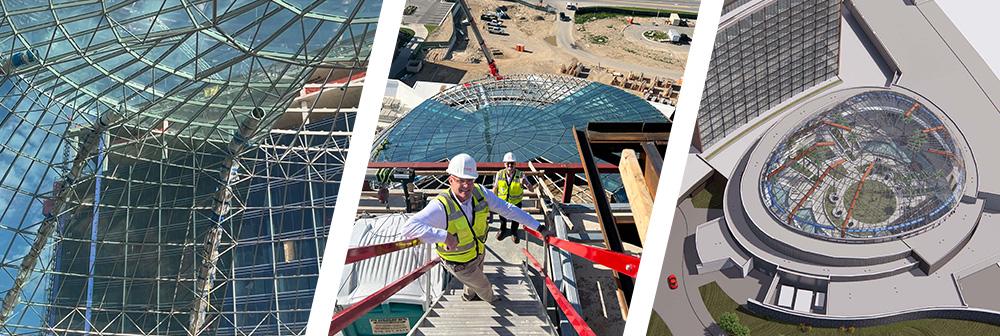
The Redefined Atlantis Casino
Welcome to the newly redefined Atlantis Casino at Atlantis Paradise Island Bahamas. HBG Design is thrilled to have designed this casino transformation, marrying contemporary brand aesthetics with the timeless charm of this iconic resort destination.

FOR IMMEDIATE RELEASE
ATLANTIS PARADISE ISLAND UNVEILS $150 MILLION RESORT-WIDE RENOVATION
Redefined Atlantis Casino, The Royal Guestrooms, Paranza, and Bar Sol Debut at the Iconic Resort
PARADISE ISLAND, BAHAMAS (July 9, 2024) – Atlantis Paradise Island, the most iconic resort destination in the Bahamas and the Caribbean, has completed a $150 million resort-wide transformation, including updates to the casino, guestrooms, restaurants and lounges. The resort unveiled refashioned guestrooms at The Royal, Atlantis’ iconic towers; an entirely redefined Atlantis Casino; and Paranza, a new restaurant at The Cove, where the esteemed Michelin-starred chef Michael White brings his culinary mastery to the table. The updates emulate the ethos of Atlantis and include custom fixtures and design details evocative of the ocean and ecosystems found throughout the Bahamas. Other additions include Bar Sol, Cleito’s private gaming, Silan, Perch, the Caribbean’s first Shake Shack, FIELDTRIP, Cartier, Thistle, and coming soon, Christian Louboutin and Paradise Links mini-golf course.
“Atlantis continuously elevates the guest experience, and recent developments at The Royal, Paranza and the Atlantis Casino provide guests with upgraded, modern touches while retaining the resort’s integral identity that visitors know and love,” said Audrey Oswell, President and Managing Director of Atlantis. “Atlantis’ experiential-driven programming allows our guests and visitors to create lifelong memories while visiting the resort and the Bahamas. The new designs throughout Atlantis demonstrate our commitment to providing an unsurpassed vacation experience.”
The Redefined Atlantis Casino Introduces a New Look and Bar Sol

The 85-table, 700-game casino, one of Atlantis’ landmark features, is home to four instantly recognizable one-of-a-kind glass sculptures by internationally renowned artist Dale Chihuly. The Sun and The Moon glass installations were created specifically for the Atlantis Casino 25 years ago, uniting color, light, form, and space to deliver a uniquely immersive experience.
By re-lighting the glass sculptures and minimizing the surrounding structure, the new design interacts harmoniously with light and space, which Chihuly is known for in his work.
The custom carpet features 26 shades, drawing on the jewel tones seen in the casino’s recognizable art. Deeply saturated hues and gold accents, combined with shimmering textures and flowing lines, echo the refractions of the sea, adding a sense of place and creating a cohesive, sophisticated look.
The beloved murals throughout the casino have been artfully restored, and nearby light features have been updated to give the spaces a modern yet classic feel incorporating Atlantis’ signature design elements. The ceilings, previously covered by canopies, are now open, creating a more spacious and airier atmosphere with a clear view of the entire casino.
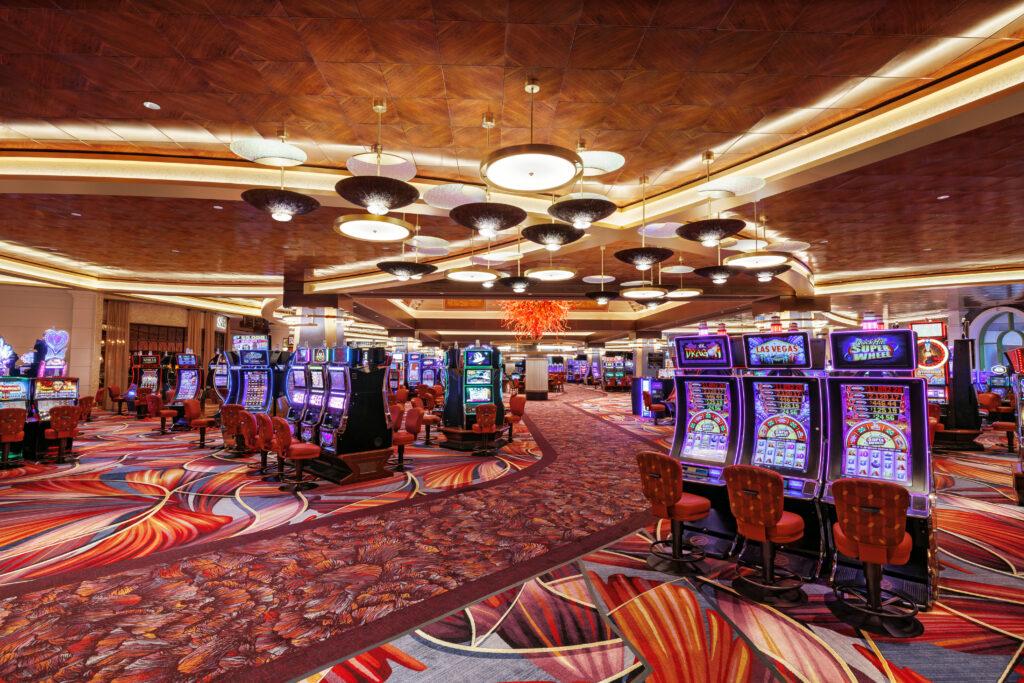
The central Moon Bar inside the casino has been upgraded with a circular deck, allowing guests to take a break from the action or step up to overlook the casino floor.
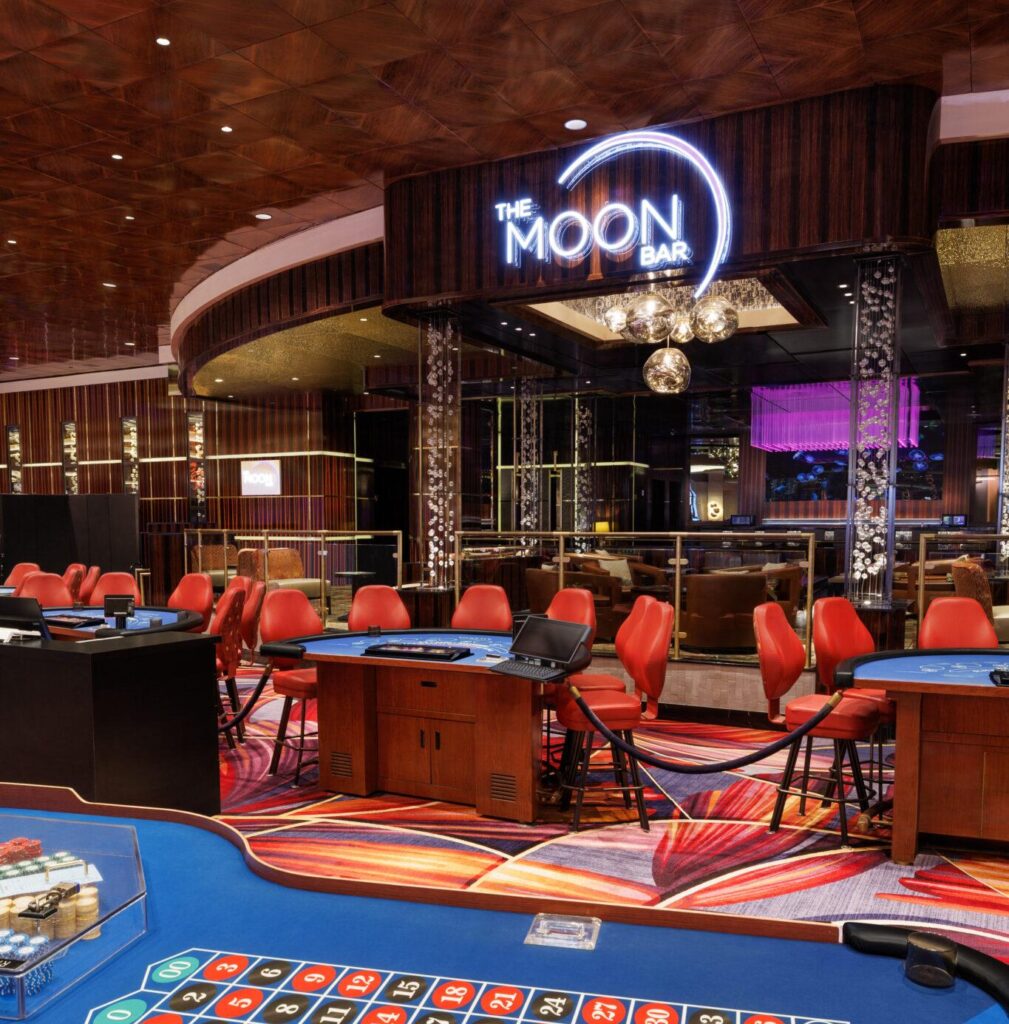
The Atlantis Casino has recently opened Bar Sol, inspired by the late Sol Kerzner's passion for Bahamian artists, music, and entertainment. It offers a stylish and sophisticated atmosphere where guests can enjoy a well-crafted cocktail and dance beneath a raised stage and DJ booth. The centerpiece of Bar Sol is a restored Chihuly chandelier that exudes warm gold hues, creating a unique ambiance complemented by the venue's lineup of nightly live music performances.

Read the Full Atlantis Press Release Announcement >> Atlantis Bahamas Announces Resort-Wide Renovation
For more information about Atlantis Paradise Island, please visit atlantisbahamas.com.
ATLANTIS PRESS CONTACTS:
Erika Garcia-Lavyne
Atlantis Paradise Island
954-235-1483
[email protected]
Kelly Wells
Eleven Six PR
302-824-4511
[email protected]
Embracing the Resort Side: A Look at HBG Design's Contributions to Non-Gaming Amenities in Tribal Casinos
In the evolving landscape of tribal gaming, non-gaming amenities have emerged as significant profit centers, enhancing the overall guest experience and driving new revenue streams. As the industry shifts towards providing comprehensive entertainment experiences, HBG Design stands at the forefront, partnering with tribal clients to innovate and tailor non-gaming amenities to meet local market demands.
WinStar World Casino & Resort: Setting New Standards
 One of the most notable projects by HBG Design is the WinStar World Casino & Resort in Oklahoma. Nathan Peak, Principal and Practice Leader for HBG Design, underscores the critical role of non-gaming amenities in reinforcing overall revenues. At WinStar, HBG Design has introduced several key non-gaming elements, including the Lucas Oil Live facility. This 6,500-seat venue, offering optimal acoustics and aesthetics, caters to the Dallas/Fort Worth market and hosts top-tier performers like Miranda Lambert and Rod Stewart. This project sets a new standard for live entertainment in the region, enhancing the guest experience with VIP event lounge suites and a dynamic LED-lit concourse.
One of the most notable projects by HBG Design is the WinStar World Casino & Resort in Oklahoma. Nathan Peak, Principal and Practice Leader for HBG Design, underscores the critical role of non-gaming amenities in reinforcing overall revenues. At WinStar, HBG Design has introduced several key non-gaming elements, including the Lucas Oil Live facility. This 6,500-seat venue, offering optimal acoustics and aesthetics, caters to the Dallas/Fort Worth market and hosts top-tier performers like Miranda Lambert and Rod Stewart. This project sets a new standard for live entertainment in the region, enhancing the guest experience with VIP event lounge suites and a dynamic LED-lit concourse.
Adjacent to Lucas Oil Live is the Session House Gastropub, seamlessly connecting the entertainment venue to the new 16-story, 304-key contemporary Spa Tower hotel. This integration exemplifies how HBG Design leverages non-gaming amenities to create holistic entertainment environments that attract a diverse array of guests.
Eagle Mountain Casino: Cultural Sensitivity and Unique Design

HBG Design’s commitment to integrating tribal culture and heritage into their projects is evident in the new 105,000-square-foot Eagle Mountain Casino operated by the Tule River Tribe in Porterville, California. Nathan Peak highlights how the design reflects the tribe's cultural symbols, with soaring vertical features recalling the giant sequoia and golden eagle, and flowing forms inspired by the Tule River. This thoughtful incorporation of cultural elements creates a distinctive and immersive environment for guests, setting the casino apart in the competitive market.
Expanding Horizons at Gun Lake Casino
 At the Gun Lake Casino in Michigan, HBG Design is pushing the envelope with the Wawye Oasis, a multi-purpose pool and event center atrium complex. This innovative space will offer a climate-controlled indoor environment shaped like a large sun dial, maintaining a cozy 82-degree climate year-round. The versatility of this space, transitioning from a resort pool oasis by day to a dynamic performance complex by night, exemplifies HBG Design’s ability to create multifunctional amenities that maximize return on investment.
At the Gun Lake Casino in Michigan, HBG Design is pushing the envelope with the Wawye Oasis, a multi-purpose pool and event center atrium complex. This innovative space will offer a climate-controlled indoor environment shaped like a large sun dial, maintaining a cozy 82-degree climate year-round. The versatility of this space, transitioning from a resort pool oasis by day to a dynamic performance complex by night, exemplifies HBG Design’s ability to create multifunctional amenities that maximize return on investment.
Enhancing Convenience with Parking Solutions
Parking facilities are often overlooked but critical components of non-gaming amenities. Nathan Peak emphasizes the importance of parking structures for guest convenience, particularly in regions with adverse weather conditions. HBG Design’s strategic planning ensures that these facilities not only protect guests but also provide quick and easy access to the gaming floor, thereby enhancing the overall guest experience and contributing to the property's profitability.
Conclusion: Innovating for the Future
HBG Design continues to lead the way in integrating non-gaming amenities into tribal casinos, recognizing their crucial role in attracting diverse guests and extending their stay. By blending cultural sensitivity with innovative design and strategic planning, HBG Design helps tribal casinos create unique, immersive experiences that drive revenue and set new industry standards. As the market for non-gaming amenities grows, HBG Design remains dedicated to partnering with tribal clients to deliver tailored solutions that meet their specific revenue objectives and enrich the guest experience.
See full article in Tribal Government Gaming
Building the Future of Gaming in Beloit
We are thrilled to announce a transformative project that promises to elevate the gaming industry and the regional economy of Beloit, Wisconsin. After years of planning and anticipation, the Ho-Chunk Nation is set to break ground on the new $405 million Ho-Chunk Gaming Beloit casino complex in fall 2024. As the chosen design firm for this landmark project, HBG Design is honored to bring our expertise in hospitality design to this exciting development.
A Milestone in the Making
The journey to this point has been long and complex, marked by the crucial approval from the Bureau of Indian Affairs in May 2022. This decision allowed for the construction of the casino on a 33-acre site at Willowbrook and Colley roads, near Interstate 39-90. The approval is the result of extensive federal processes, discussions, and negotiations between tribal representatives, local authorities, and community stakeholders. It symbolizes a significant step forward for the Ho-Chunk Nation and the city of Beloit.

Vision for a Comprehensive Entertainment Experience
Robert Mudd, Executive Director of Business for the Ho-Chunk Nation, shared his enthusiasm: “We are thrilled to advance our development plans in time for a fall groundbreaking, moving forward with the final design by HBG Design, the infrastructure work and construction. In the gaming market, our competitors are stepping up, as they should. Each offers a unique product, and that’s our aim too.”
The development will feature a 1,500-to-1,800-slot casino with 44 table games, an 18-story, 300-key hotel tower, a multi-purpose convention center, and multiple food and beverage venues. Additionally, sports betting facilities will be available, thanks to an agreement between the Ho-Chunk Nation and the state of Wisconsin. This comprehensive array of amenities underscores the project's commitment to providing an unparalleled entertainment experience.
Economic Impact and Community Benefits
 The construction of Ho-Chunk Gaming Beloit is expected to span 18 to 24 months, creating an estimated 3,000 direct and indirect jobs. Once operational, the complex will offer around 1,500 permanent positions. The economic benefits extend further with revenue-sharing agreements anticipated to provide up to $3 million annually to Beloit and Rock County, supporting local infrastructure improvements and community services.
The construction of Ho-Chunk Gaming Beloit is expected to span 18 to 24 months, creating an estimated 3,000 direct and indirect jobs. Once operational, the complex will offer around 1,500 permanent positions. The economic benefits extend further with revenue-sharing agreements anticipated to provide up to $3 million annually to Beloit and Rock County, supporting local infrastructure improvements and community services.
Beyond its economic contributions, the new complex will significantly enhance Beloit’s tourism and hospitality sectors. The expansive convention center and other amenities will attract business conventions, expos, concerts, and more, positioning Beloit as a regional hub for entertainment and commerce.
A Legacy of Excellence
Ho-Chunk Gaming Beloit will be the seventh casino owned and operated by the Ho-Chunk Nation in Wisconsin, joining a prestigious lineup including Ho-Chunk Gaming Black River Falls, Madison, Nekoosa, Tomah, Wisconsin Dells, and Wittenberg.
HBG Design is proud to continue our longstanding partnership with the Ho-Chunk Nation. Our expertise in designing high-profile large-scale resort destinations is exemplified in our previous projects for the Ho-Chunk Gaming brand, including expansions and renovations at Wisconsin Dells, Black River Falls, and Wittenberg. These projects, completed in 2018 and 2019, set the stage for the innovative and comprehensive design approach we bring to Ho-Chunk Gaming Beloit.
Looking Ahead
As we prepare for groundbreaking in fall 2024, HBG Design is excited to contribute to a project that promises to be a game-changer for the Ho-Chunk Nation, Beloit, and the broader Wisconsin region. Stay tuned for more updates as we embark on this journey to shape the future of gaming and entertainment in Beloit.
See full article in Casino Style Magazine.
Slot Floor Design Evolution: A Perspective from HBG Design
See full article is Casino Style Magazine
The casino industry has witnessed a significant transformation in slot floor design, driven by trends in game design and economic changes. The days of tightly packed rows of slot machines are fading, giving way to more spacious, creatively designed floors that enhance both functionality and guest experience.
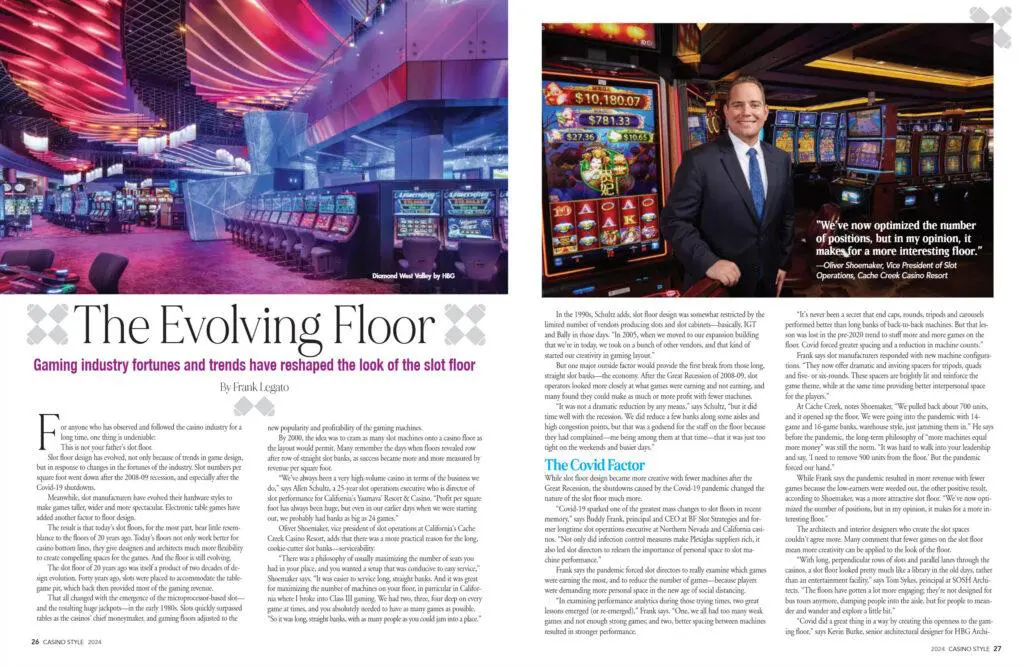 HBG Design's Vision
HBG Design's Vision
Kevin Burke, Senior Architectural Designer for HBG Design, highlights how the pandemic catalyzed this change. "Covid did a great thing in a way by creating this openness to the gaming floor," Burke states. The emphasis shifted from the sheer number of games to the overall size and openness of the gaming floor, allowing for better spacing and a more pleasant environment. Burke emphasizes the importance of careful planning with clients to achieve these open spaces and amenities, integrating gaming with a more holistic entertainment experience.
Enhanced Guest Experience
Burke further notes, "The last 10 years have seen an entertainment focus, with an elevated guest experience on the gaming floor." HBG Design's approach involves crafting a story and a strong concept that starts from the street and permeates throughout the property, including the gaming floor. This evolution from the previously smaller, tighter, and darker spaces to more open and engaging environments allows for better wayfinding, sightlines, and connection to surrounding amenities.
Adapting to New Machine Designs
 Changes in slot machine designs have also influenced floor layouts. Modern machines are taller and more immersive, requiring adjustments in floor design to maintain a balance between visibility and player experience. "We’ve been going through what we need as our dimensions for gaming floors. It’s a much different-looking machine than it was even a few years ago," Burke explains. HBG Design aims to create flexible spaces that can adapt to various layout options, catering to both privacy and social interaction needs.
Changes in slot machine designs have also influenced floor layouts. Modern machines are taller and more immersive, requiring adjustments in floor design to maintain a balance between visibility and player experience. "We’ve been going through what we need as our dimensions for gaming floors. It’s a much different-looking machine than it was even a few years ago," Burke explains. HBG Design aims to create flexible spaces that can adapt to various layout options, catering to both privacy and social interaction needs.
Future Trends
Looking ahead, Burke sees a continued trend towards integrating entertainment directly on the casino floor.
"Entertainment offerings on the casino floor will be a key focus. Stadium gaming is here to stay," he says.
As sports betting expands, there's potential for further blending of sports with gaming experiences, creating a more dynamic and engaging environment for patrons.
An ACM-Nominated Theater! Lucas Oil Live at WinStar
ACM-Nominated Lucas Oil Live Theater is a symphony of entertainment and design excellence. See more at the Academy of Country Music Awards
WinStar World Casino Resort's Lucas Oil Live received a nomination as 'Casino of the Year-Theater' by the 59th ACM Awards. Country music is a cornerstone of WinStar's vibrant performance schedule at Lucas Oil Live.
HBG Design proudly introduces Lucas Oil Live at Winstar World Casino & Resort in Thackerville, Oklahoma. The 6,500-seat amphitheater-style arena, housed within a 250,000-square-foot facility, is not merely a space for performances; it’s an immersive journey. Every element is designed to build on the energy that will be coming from the concerts within. The exterior’s angled glass offers an unobstructed view of the thematic soundwave motif. The dynamic LED-lit concourse mirrors the rhythmic flow of music. The rock and roll aesthetics, infused into the color palette and materials, create an atmosphere inspired by amplified music. Beyond the performances, Lucas Oil Live introduces Session House Gastropub, seamlessly connecting with the resort’s newly opened Spa Tower Hotel.
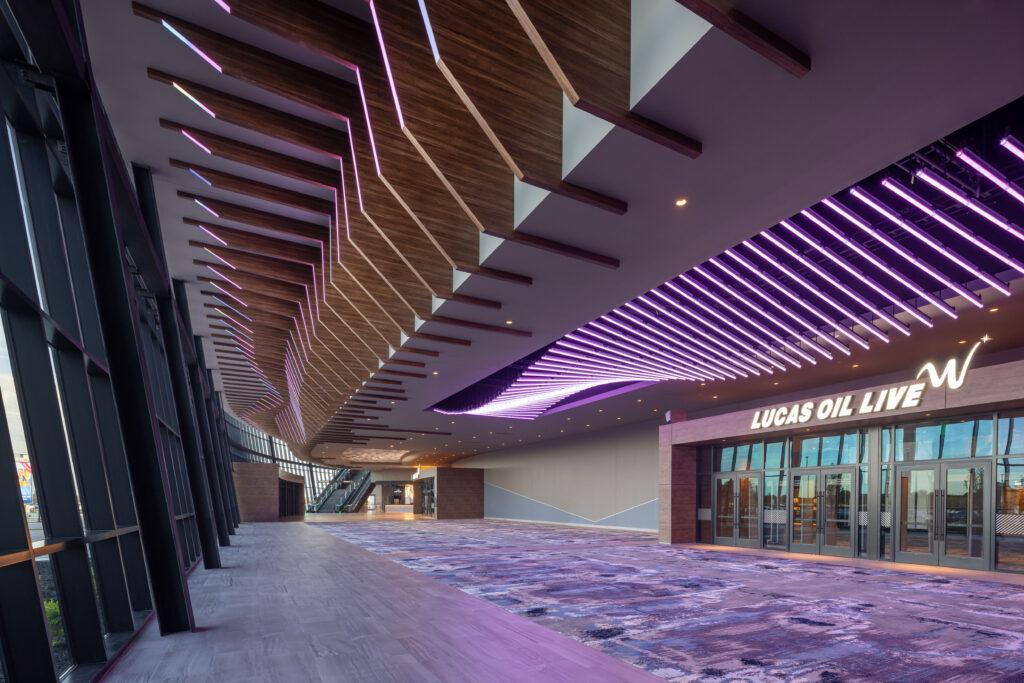
Drawing from imagery associated with charting sound, including graphic equalizers, sound waves, and instruments measuring amplification, every element reflects a connection to the world of music.
The concourse, a dynamic focal point, features LED lighting with a distinctive fin, angled glass pronounced on the exterior, offering an unobstructed view to the thematic soundwave motif.
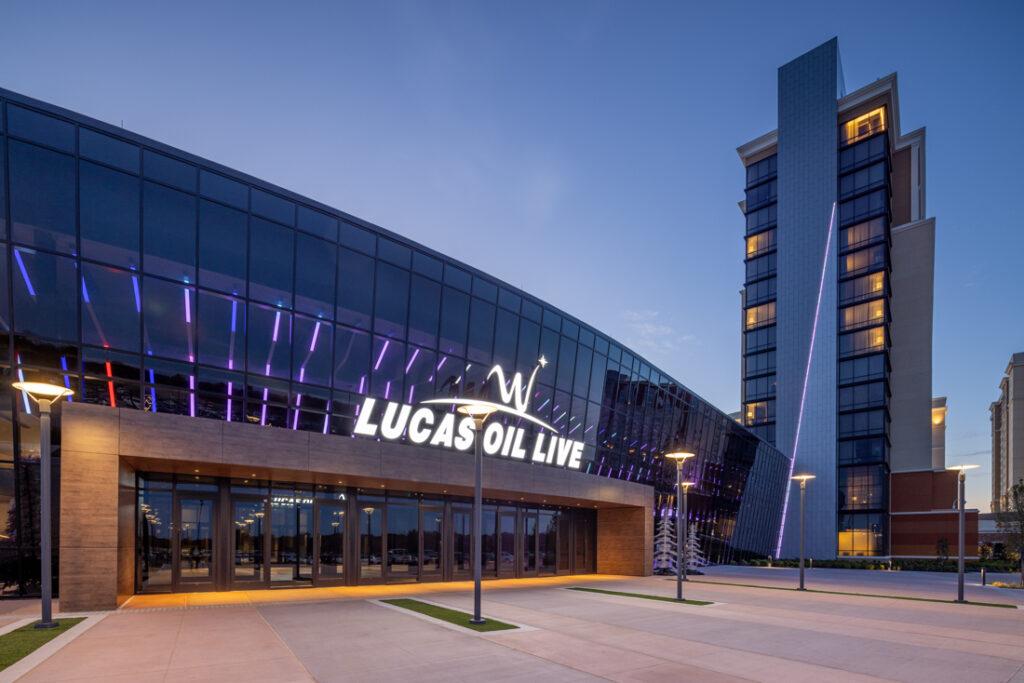
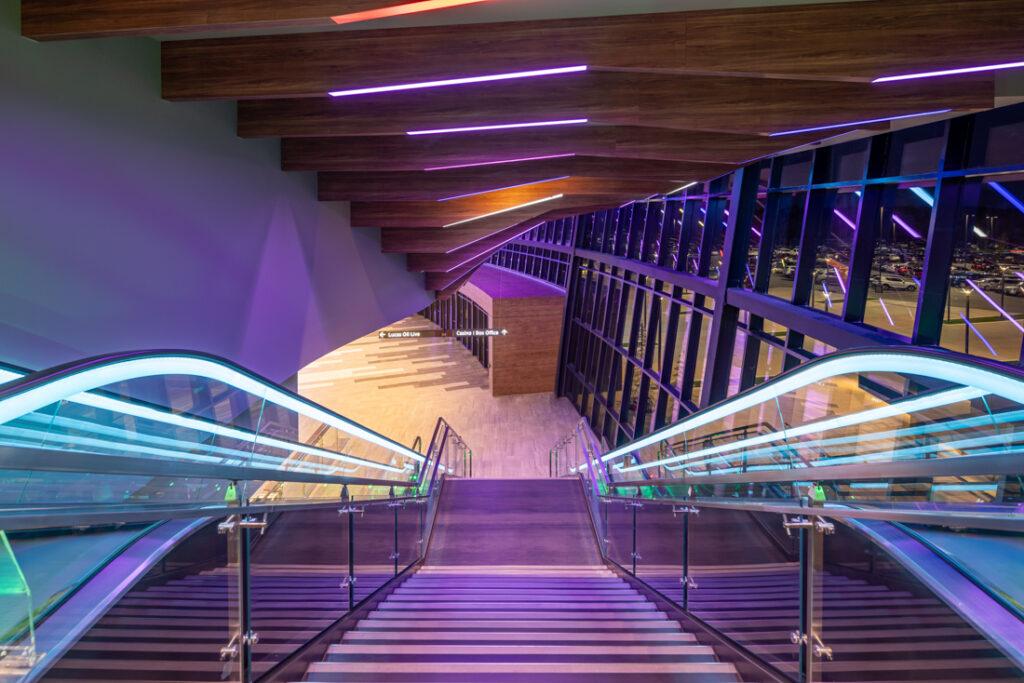

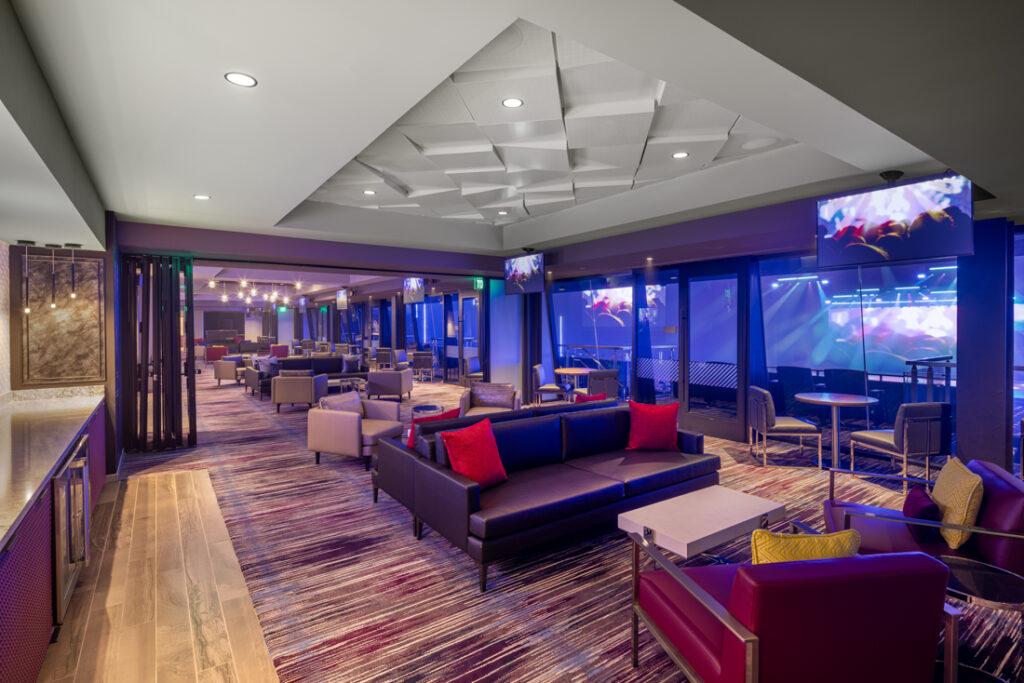
Recognizing Emily Marshall as a "Women Who Lead Design" Honoree
Read the full article in the Memphis Business Journal

The Memphis Business Journal recognizes Emily Marshall HBG Design Interior Design Leader as a "Women Who Lead Design" Honoree.
Emily Marshall is proudly decisive about her biggest career achievement. It “undoubtedly lies in the growth and development of HBG Design’s interior design group.” Over her 14 years with the firm, she helped grow the team from four to 21 pros, calling it a rewarding endeavor. She says that’s given HBG a “unique edge in our integrated resort, entertainment, and hospitality market sectors.”
She adds that what also sets HBG apart is the teams’ collaborative approach of its architects and interior designers working hand-in-hand from the inception of projects.
Emily is focused on a few big professional goals, one of which is expanding the interior design team within its national offices, especially Dallas. Soon, she’ll work on designing a new Marriott hotel at the 100 North Main development. And she’s “profoundly invested in the holistic development” of team members — seeing their successes gives Emily pride and joy.
On trends: “One of the most exciting trends I’m seeing in our industry is the emergence of experiential and immersive food and beverage/restaurant designs. These spaces are meticulously crafted with attention to detail, where every design selection is thoughtfully curated and resonates purposefully with intention. What I find particularly captivating are the rooftop patio restaurants, uniquely designed to blur the lines between indoor and outdoor spaces. These spaces offer a harmonious environment that engages all the senses, creating unforgettable experiences for guests.”
Other articles featuring Emily:
https://hbg.design/hbgs-pick-of-the-trends/
https://hbg.design/hbg-dives-into-the-trend-pools-and-spas-at-casino-hotels/
https://hbg.design/hbg-designers-share-post-covid-design-solutions/

